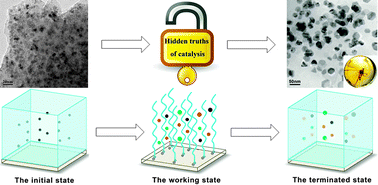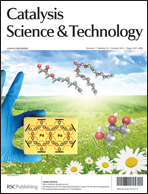It has been a long-term dream for scientists working in the field of catalysis to characterize the catalyst details at any state during the course of reaction under actual working conditions. Here, an amber-inspired hybrid material was designed to trap the catalyst working state generated during the reaction process of cobalt-based Fischer–Tropsch synthesis (FTS), which made the unavailable information for the catalytic clean liquid fuel synthesis processes obtainable via current ex situ characterization techniques. The trapped states were used to study the nanostructure evolution of the air-sensitive active species. In the experiments, the thin films of organic modifier anchored onto the montmorillonite (MMT) supports were designed to prevent the active Co components and phases generated during catalytic reaction from being oxidized when they are exposed to air. Consequently, the changes of the active species such as ε-Co to hcp Co and ε-Co to fcc Co phase transformation, Co nanoparticle growth, reoxidation during reaction, and the structure–property relationship of FTS catalysts were revealed clearly for the first time.

You have access to this article
 Please wait while we load your content...
Something went wrong. Try again?
Please wait while we load your content...
Something went wrong. Try again?


 Please wait while we load your content...
Please wait while we load your content...